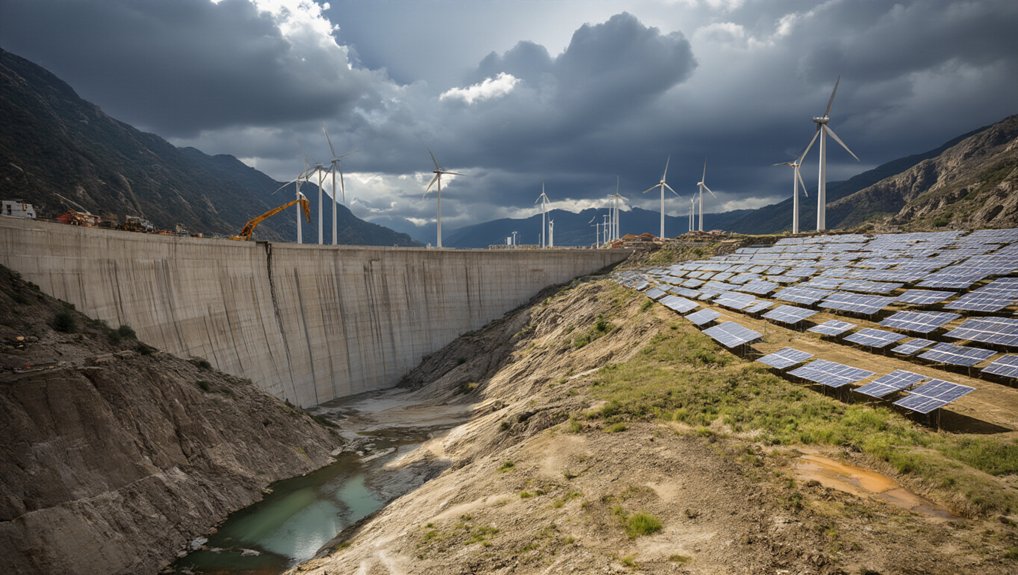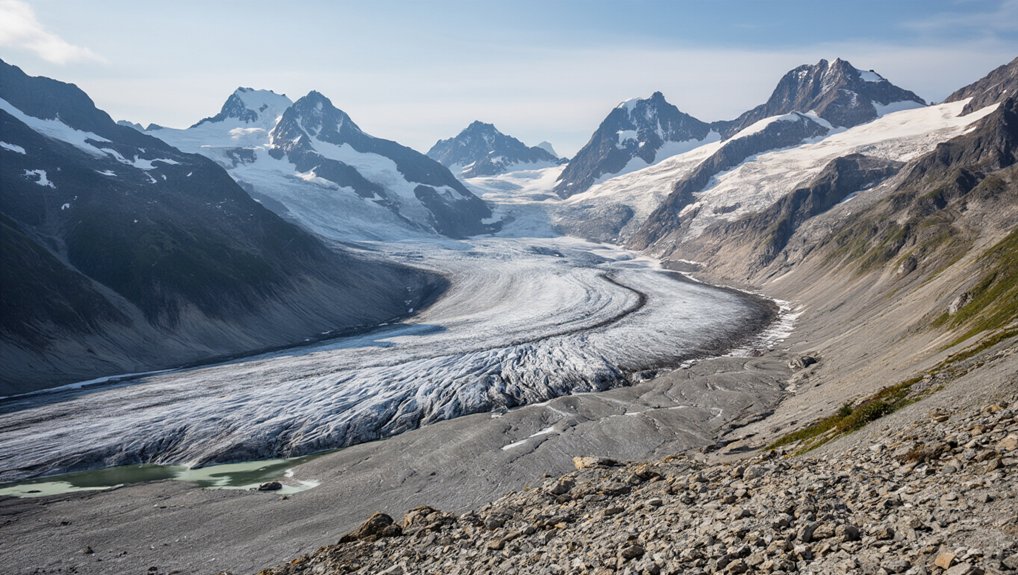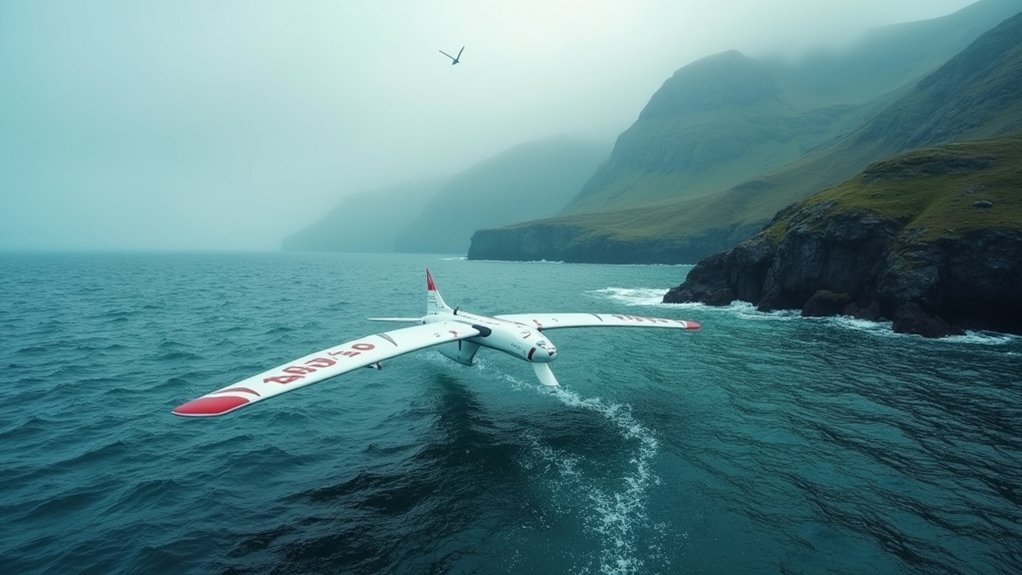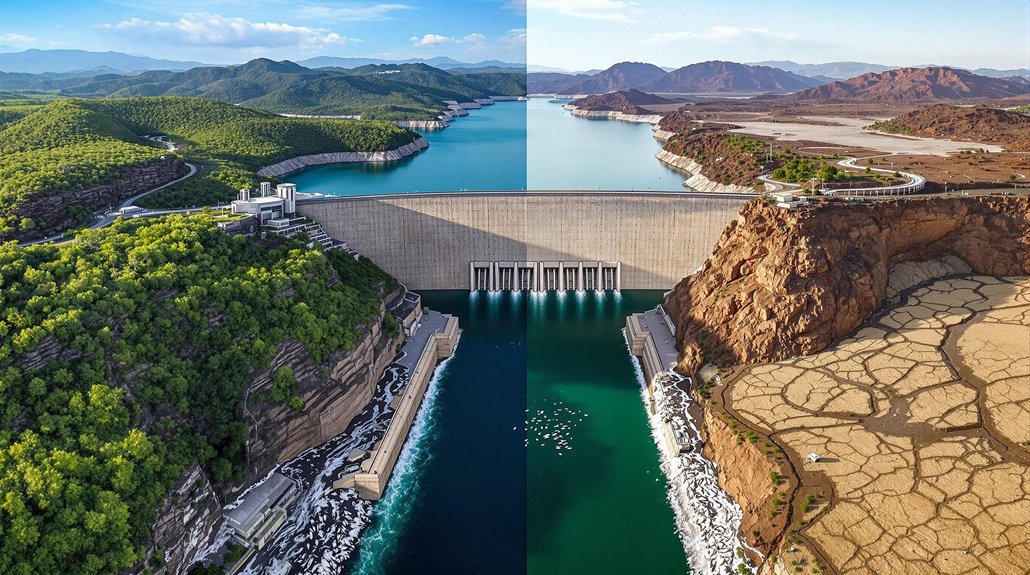While once the darling of renewable energy, hydropower now finds itself swimming against the current. The numbers don’t lie. At $60 per megawatt-hour, hydro costs a hefty 54% more than onshore wind. Not exactly a bargain in today’s cost-conscious energy market.
Big dams mean big money upfront. Investors hate waiting, and hydropower makes them do just that. Construction drags on for years while wind farms and solar arrays pop up practically overnight. Talk about instant gratification.
Then there’s the environmental rap sheet. Dams flood massive areas—up to 1,000 square meters per megawatt-hour—while wind and solar sip land at less than one square meter. Fish can’t exactly swim through concrete walls. Rivers get chopped up like bad salads. Large dams are widely considered the most dangerous green energy source due to their devastating effects on habitats and biodiversity.
Remember when everyone thought dams were carbon-free? Surprise! Those reservoirs are methane factories as submerged plants rot underwater. So much for the clean energy poster child.
Local communities? They’re often the forgotten victims. “Sorry, your ancestral village is now underwater, but hey, the city 200 miles away has reliable electricity!” Not exactly a fair trade. The benefits flow downstream, while locals drown in broken promises. The construction of large dams has resulted in the displacement of 80 million people worldwide, many without adequate compensation or relocation support.
Geography is a cruel master. The best spots for dams are already taken. What’s left are marginal sites with disappointing returns. Meanwhile, climate change throws water availability into chaos. Yesterday’s reliable river is today’s unpredictable mess.
Even hydro’s traditional strength—grid flexibility—is losing its shine. Battery storage is getting cheaper by the day. Unlike geothermal energy’s impressive 96% capacity factor, hydropower fluctuates wildly with seasonal water levels. The market increasingly favors nimble, distributed solutions over hulking concrete monuments.
The verdict in the marketplace is clear. Wind turbines sprout like weeds while proposed dam projects gather dust on shelves. The economics, environmental impacts, and social costs have created a perfect storm.
Hydropower isn’t dead. But its glory days? Going, going, gone—washed downstream by the rising tide of cheaper, faster alternatives.
References
- https://www.carboeurope.org/hydropower-vs-wind-energy/
- https://www.usip.org/publications/2022/10/how-balance-hydropower-and-local-conflict-risks
- https://www.eia.gov/todayinenergy/detail.php?id=65286
- https://climate.mit.edu/ask-mit/why-arent-we-looking-more-hydropower
- https://ember-energy.org/latest-insights/global-electricity-review-2025/global-electricity-source-trends/








